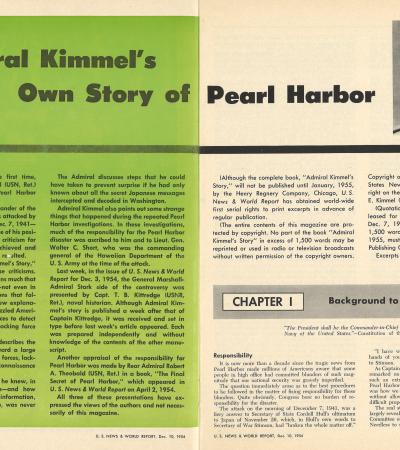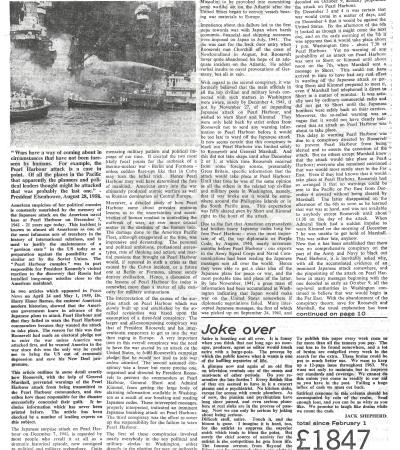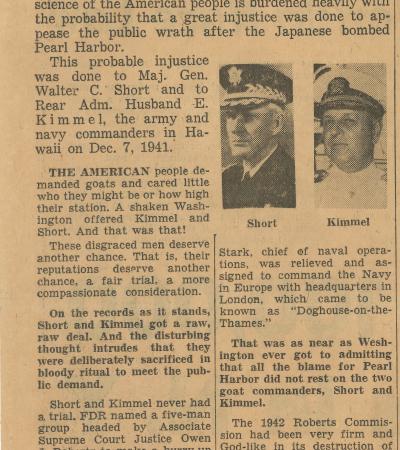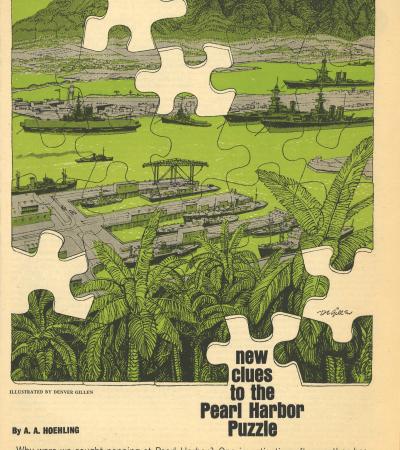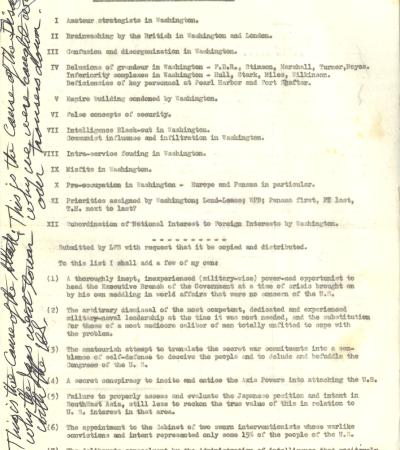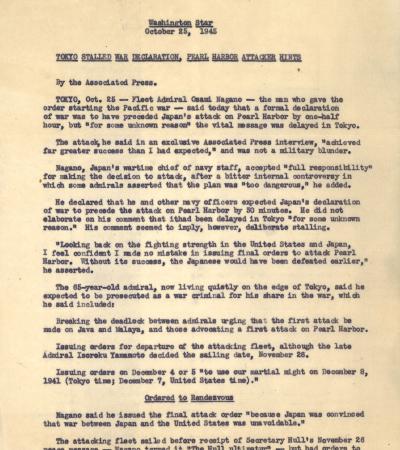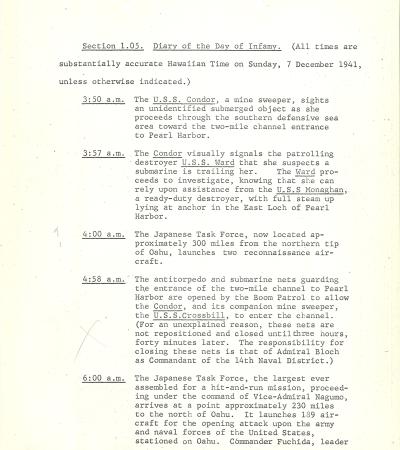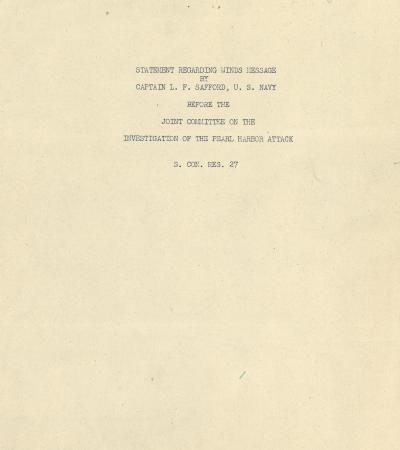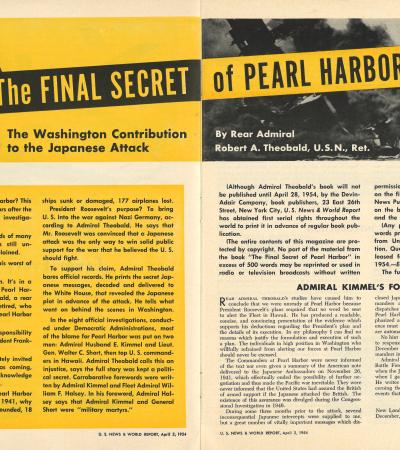Laurance Safford held various naval positions focused on communications and cryptology. After the Pearl Harbor attack, he became convinced that the US had actionable intelligence before it occurred. The collection includes magazine articles, correspondence, and research files about Pearl Harbor.
"Admiral Kimmel's Own Story of Pearl Harbor" by Admiral Husband E. Kimmel, U.S. News & World Report, December 10, 1954
The article, which is an excerpt of a book by Admiral Husband E. Kimmel, provides Kimmel's perspective on Pearl Harbor and who was responsible for lapses of information provided to the Army and Navy prior to the attack. It is his attempt to set the record straight regarding Pearl Harbor and the subsequent investigations into the attack.
"What happened at Pearl Harbour?" by Harry Elmer Barnes, Peace News, December 7, 1962
The article takes a revisionist perspective and argues that the American government had prior knowledge of the impending Japanese attack on Pearl Harbor but chose not to warn the commanders because President Roosevelt wanted an excuse to enter World War II. Barnes claims that Roosevelt intentionally withheld information to provoke the attack and subsequently managed to conceal this strategy.
"Did Kimmel And Short Get True Justice?" by Lyle Wilson, The Indianapolis Times, December 7, 1964
The article suggests that there was a great injustice done to Major General Walter C. Short and to Rear Admiral Husband E. Kimmel when they were accused of derelictions of duty and errors of judgment following Pearl Harbor. It argues that Kimmel and Short were made into scapegoats to appease public wrath after the Japanese bombed Pearl Harbor.
"New Clues to the Pearl Harbor Puzzle" by A.A. Hoehling, True, March 1963
The article examines the events leading up to the Pearl Harbor attack, and why the U.S. was caught off guard. It highlights the failures in intelligence, communication, and preparedness among the military and government officials. The narrative also delves into the critical week before the attack, shedding light on the missed signals and misinterpretations that contributed to the surprise and devastation of the assault.
"Causes of the Pearl Harbor Disaster"
This list of causes of Pearl Harbor reflects Laurance F. Safford's revisionist approach to analyzing the circumstances that led up to Pearl Harbor.
"Tokyo Stalled War Declaration, Pearl Harbor Attacker Hints", Washington Star, October 25, 1945
This article reports that, according to Japanese Fleet Admiral Nagano, a formal declaration of war was supposed to have preceded Japan's attack on Pearl Harbor. According to reporting, Nagano issued the final attack order because he was convinced that war between Japan and the U.S. was unavoidable.
"Diary of the Day of Infamy"
This section of a report titled "The Debacle At Pearl Harbor - Deficiencies in Personnel, Materiel, Communications and Mission" outlines a timeline of events that unfolded on December 7, 1941.
Statement Regarding Winds Message by Captain L. F. Safford before the Joint Committee on the Investigation of the Pearl Harbor Attack
The statement discusses the "Winds Message," a Japanese code indicating war, which was intercepted on December 4, 1941. Safford explains that the message was part of a Japanese overseas broadcast, intercepted by the U.S. Navy. Safford concludes that it was a series of communication failures that resulted in the failure of U.S. forces to be prepared for the Pearl Harbor attack.
"The Final Secret of Pearl Harbor" by Rear Admiral Robert A. Theobald, U.S. News & World Report, April 2, 1954
The article argues that key intelligence about Japanese intentions, which could have prevented the Pearl Harbor attack, was deliberately withheld from the U.S. Navy and Army commanders in Hawaii. It suggests that President Roosevelt's administration manipulated information to ensure the U.S. would be unprepared for the attack, thereby justifying America's entry into World War II. The blame was politically directed towards Admiral Kimmel and General Short, who were made scapegoats for the disaster.
